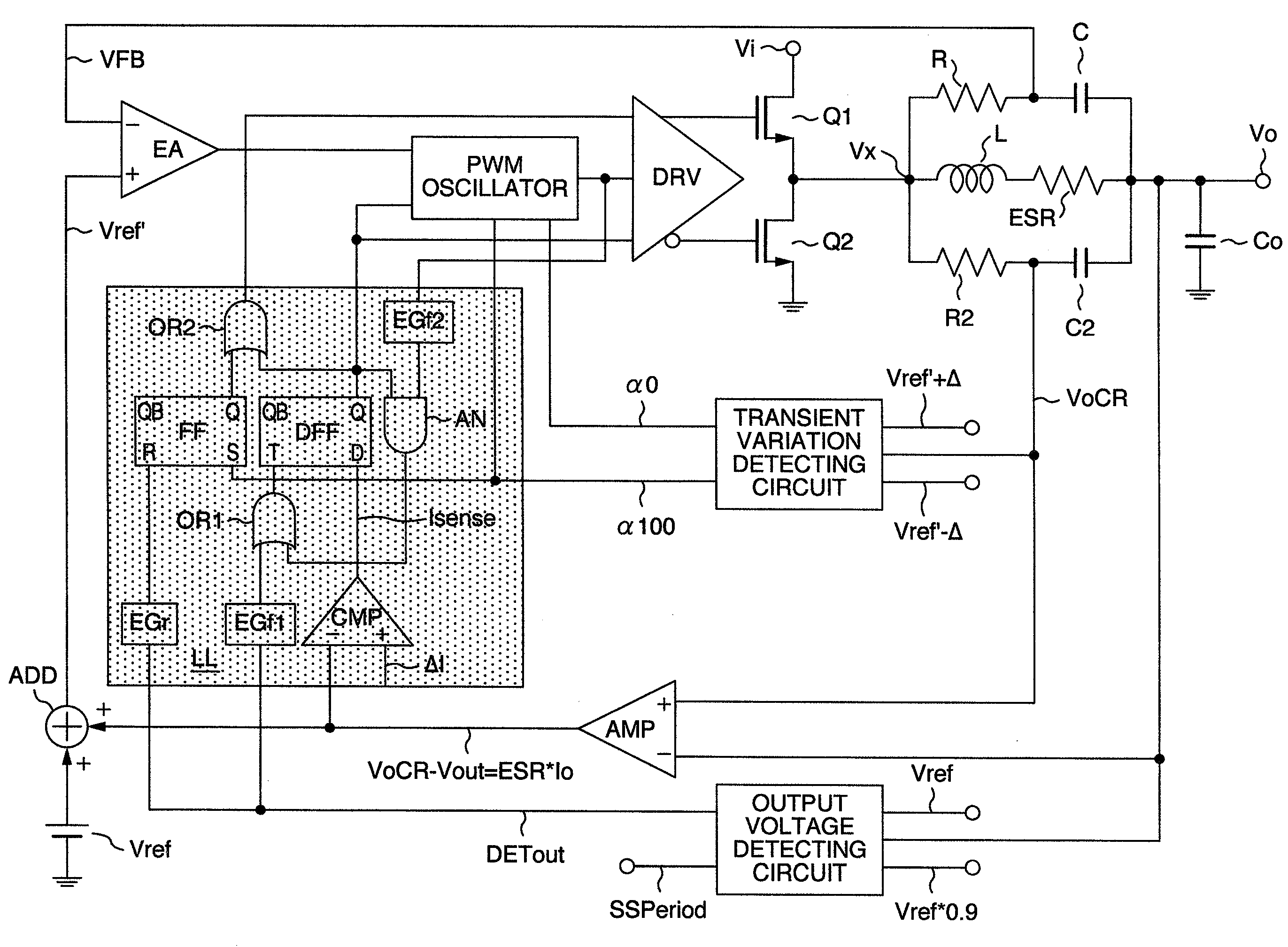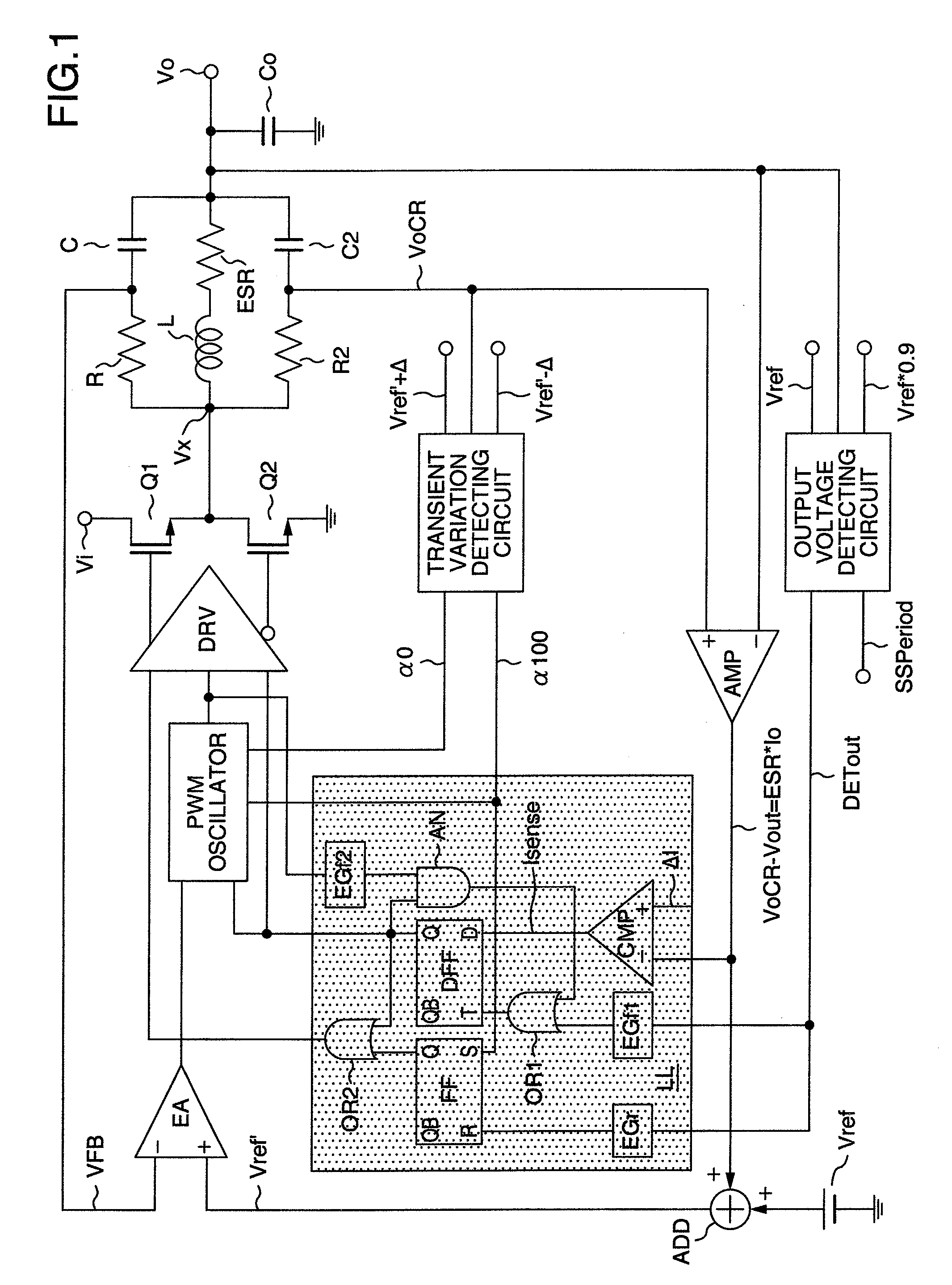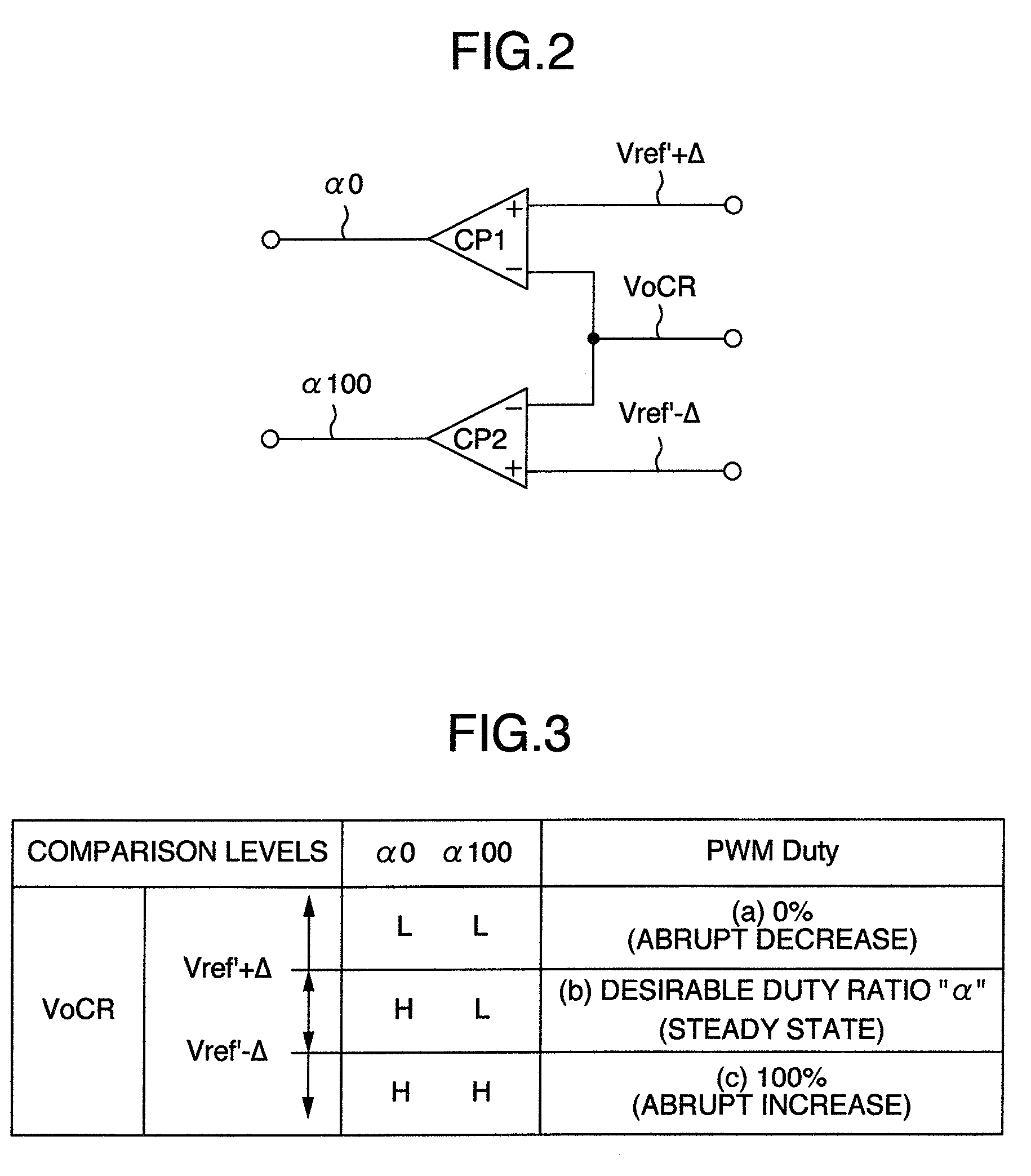Power Supplying Apparatus
a power supply and power mosfet technology, applied in the direction of electric variable regulation, process and machine control, instruments, etc., can solve the problems of large switching losses and control power, under-mentioned drawbacks of high control power, and large switching losses of upper/lower-sided power mosfets, so as to reduce the control power of the upper/lower-sided power mosfets and minimize the switching loss. , the effect of improving efficiency
- Summary
- Abstract
- Description
- Claims
- Application Information
AI Technical Summary
Benefits of technology
Problems solved by technology
Method used
Image
Examples
embodiment 1
[0033]A circuit diagram of a power supply apparatus according to an embodiment 1 of the present invention is indicated in FIG. 1. In FIG. 1, symbol “Vi” shows an input terminal, and symbol “Vo” indicates an output terminal. An upper-sided power MOSFET (Q1) is connected to the input terminal “Vi”, and a lower-sided power MOSFET (Q2) is connected to the ground side. An LC smoothing filter is connected to a midpoint between the power MOSFETs (Q1) and (Q2), while the LC smoothing filter corresponds to a power series output filter constructed by employing an inductor “L” and a capacitor “Co.” Then, a first CR smoothing filter arranged by a resistor “R” and a capacitor “C” and a second CR smoothing filter arranged by a resistor “R2” and a capacitor “C2” are connected in a parallel manner between both terminals of the inductor “L” of the LC smoothing filter. In addition, the output terminal Vo, one input “(−)” of a differential amplifier “AMP” and an input of an output voltage detecting ci...
embodiment 2
[0061]FIG. 8 is a circuit block diagram of a power supply apparatus according to an embodiment 2 of the present invention. It should be noted that the same reference numerals shown in FIG. 1 will be employed as those for denoting the same, or similar structural elements represented in FIG. 8. The power supply apparatus shown in FIG. 8 has the below-mentioned different points from those of FIG. 1: That is, as the stopping (turn-OFF) signal for turning OFF both the lower-sided power MOSFET (Q2) and the PWM oscillator “PWM”, the output “Q” of the D type flip-flop DFF is not employed, but the output of the OR gate OR2 is employed which is similarly used to the upper-sided power MOSFET (Q1). In this case, when the power supply apparatus is driven under light load condition, the upper-sided power MOSFET (Q1) is turned ON one time so as to recover the output voltage to the predetermined voltage, which is similar to that of FIG. 1. However, in accordance with the embodiment 2, since the low...
embodiment 3
[0066]FIG. 9 shows an embodiment 3 of the present invention in which the power supply apparatus indicated in FIG. 1 is controlled in a digital manner. In FIG. 9, in order to replace circuits and functions of FIG. 1 by digitally-operable circuits and functions, the below-mentioned seven, or more technical ideas are conducted: That is,
[0067]1) the converted voltage “VFB” which has been fed back from the output of the first CR smoothing filter constituted by the capacitor C and the resistor R is obtained from the output terminal “Vo.”
[0068]2) the transient variation detecting circuit TVD arranged by the comparators CP1 and CP2 is separately provided with respect to a digital signal processing unit 100 for performing a high-speed processing.
[0069]3) the new reference voltage “Vref′” generated by operating the differential amplifier AMP and the adder ADD is replaced by such a new digital reference voltage signal “Dref′” which is generated in such a manner that in the digital processing u...
PUM
 Login to View More
Login to View More Abstract
Description
Claims
Application Information
 Login to View More
Login to View More - R&D
- Intellectual Property
- Life Sciences
- Materials
- Tech Scout
- Unparalleled Data Quality
- Higher Quality Content
- 60% Fewer Hallucinations
Browse by: Latest US Patents, China's latest patents, Technical Efficacy Thesaurus, Application Domain, Technology Topic, Popular Technical Reports.
© 2025 PatSnap. All rights reserved.Legal|Privacy policy|Modern Slavery Act Transparency Statement|Sitemap|About US| Contact US: help@patsnap.com



